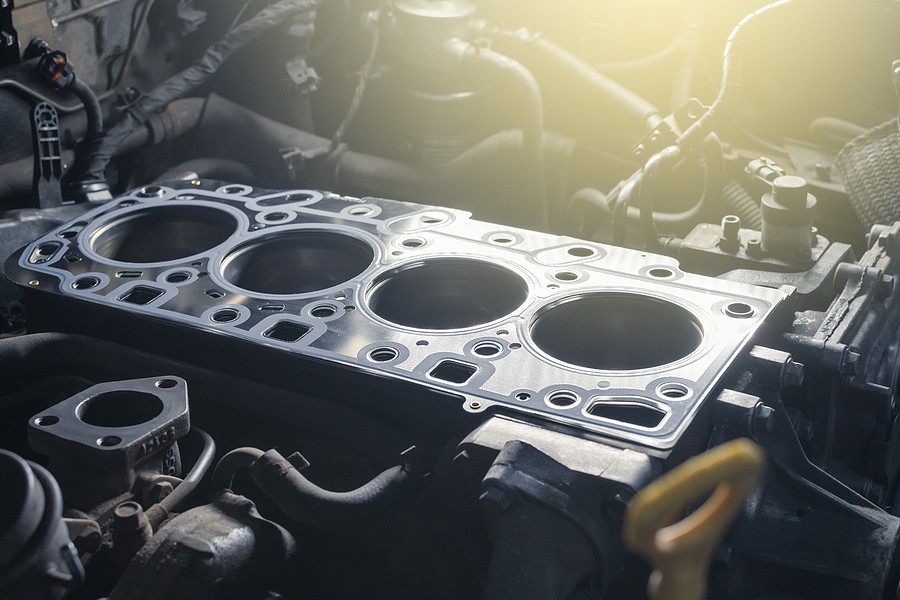At some point in a car's life, a blown head gasket may occur. A blown head gasket can cause a multitude of problems, including engine overheating, loss of power, and even engine failure. Fortunately, there are a few ways to tell if your car has a blown head gasket before these problems become severe. In this article, we will discuss what a head gasket is, why it can fail, and how to tell if your car has a blown head gasket.
What is a Head Gasket?
A head gasket is a thin, flat gasket that sits between the engine block and cylinder head in a car's engine. Its purpose is to seal the combustion chambers and prevent coolant and oil from leaking into them. The head gasket also helps to maintain compression in the cylinders, which is crucial for the engine to function properly.

Why Do Head Gaskets Fail?
Head gaskets can fail for a variety of reasons, but the most common cause is overheating. When the engine overheats, the metal in the engine block and cylinder head can expand, causing the head gasket to fail. Other causes of head gasket failure include poor installation, poor maintenance, and wear and tear over time.
How to Tell if Your Car has a Blown Head Gasket
- Overheating: The most common symptom of a blown head gasket is engine overheating. If your car's temperature gauge is showing that the engine is running hot, or if you notice steam coming from under the hood, it could be a sign of a blown head gasket.
- Loss of Power: A blown head gasket can cause a loss of power, as the compression in the cylinders may be compromised. If you notice a lack of power when accelerating, or if your car struggles to climb hills or maintain speed, it could be a sign of a blown head gasket.
- Coolant in the Oil: If the head gasket has failed, coolant may leak into the engine oil. This can cause the oil to turn a milky color and can damage the engine if not addressed.
- White Smoke from the Exhaust: If you notice white smoke coming from the exhaust, it could be a sign of a blown head gasket. This is because coolant may be leaking into the combustion chamber and burning, producing white smoke.
- Bubbles in the Radiator: If you notice bubbles in the radiator when the engine is running, it could be a sign of a blown head gasket. This is because exhaust gases may be leaking into the coolant system, causing bubbles to form.

Frequently Asked Questions
- Can I still drive my car with a blown head gasket? It is not recommended to drive a car with a blown head gasket. The longer you continue to drive, the more damage you will cause to the engine. It's best to have it towed to a mechanic for repair.
- How much does it cost to repair a blown head gasket? The cost of repairing a blown head gasket varies depending on the make and model of the car and the severity of the damage. On average, it can cost between $1,000 and $2,000 to replace a blown head gasket.
- How long does it take to repair a blown head gasket? The time it takes to repair a blown head gasket can vary depending on the severity of the damage and the availability of parts. On average, it can take between 4 and 8 hours to replace a head gasket.
- Can I prevent a blown head gasket? Regular maintenance of your car's cooling system can help prevent a blown head gasket. This includes keeping the coolant level
at the proper level, changing the coolant according to the manufacturer's recommended schedule, and ensuring that the radiator and cooling fans are working properly.
- How do I know if the head gasket is damaged beyond repair? If the head gasket is severely damaged, it may not be possible to repair it and it will need to be replaced. A mechanic can perform tests to determine the extent of the damage and provide recommendations for repair or replacement.
Conclusion
If you do need to have your head gasket replaced, it's important to choose a qualified and experienced mechanic to perform the work. The cost of replacing a head gasket can vary depending on the make and model of your car and the severity of the damage, but it's important to remember that this is an important repair that should not be put off.
In addition to addressing a blown head gasket, it's also important to take steps to prevent one from occurring in the first place. Regular maintenance of your car's cooling system is key, but it's also important to be mindful of other factors that can contribute to engine overheating, such as driving in hot weather or driving with a heavy load. By taking care of your car and addressing any issues as soon as they arise, you can help keep your car running smoothly and prevent costly repairs down the road.
In summary, a blown head gasket can be a serious problem for a car's engine, but there are ways to prevent it from occurring and to address it when it does. By being aware of the signs of a blown head gasket and taking action when needed, you can help keep your car running smoothly and reliably. If you suspect that your car has a blown head gasket, be sure to have it inspected by a qualified mechanic as soon as possible.
In conclusion, a blown head gasket can cause a range of problems for a car's engine, including overheating, loss of power, and engine failure. It's important to be aware of the signs of a blown head gasket and take action as soon as possible to prevent further damage. If you suspect that your car has a blown head gasket, it's best to have it towed to a mechanic for repair. Regular maintenance of your car's cooling system can also help prevent a blown head gasket from occurring. By staying vigilant and taking action when needed, you can help ensure that your car runs smoothly and reliably for years to come.



